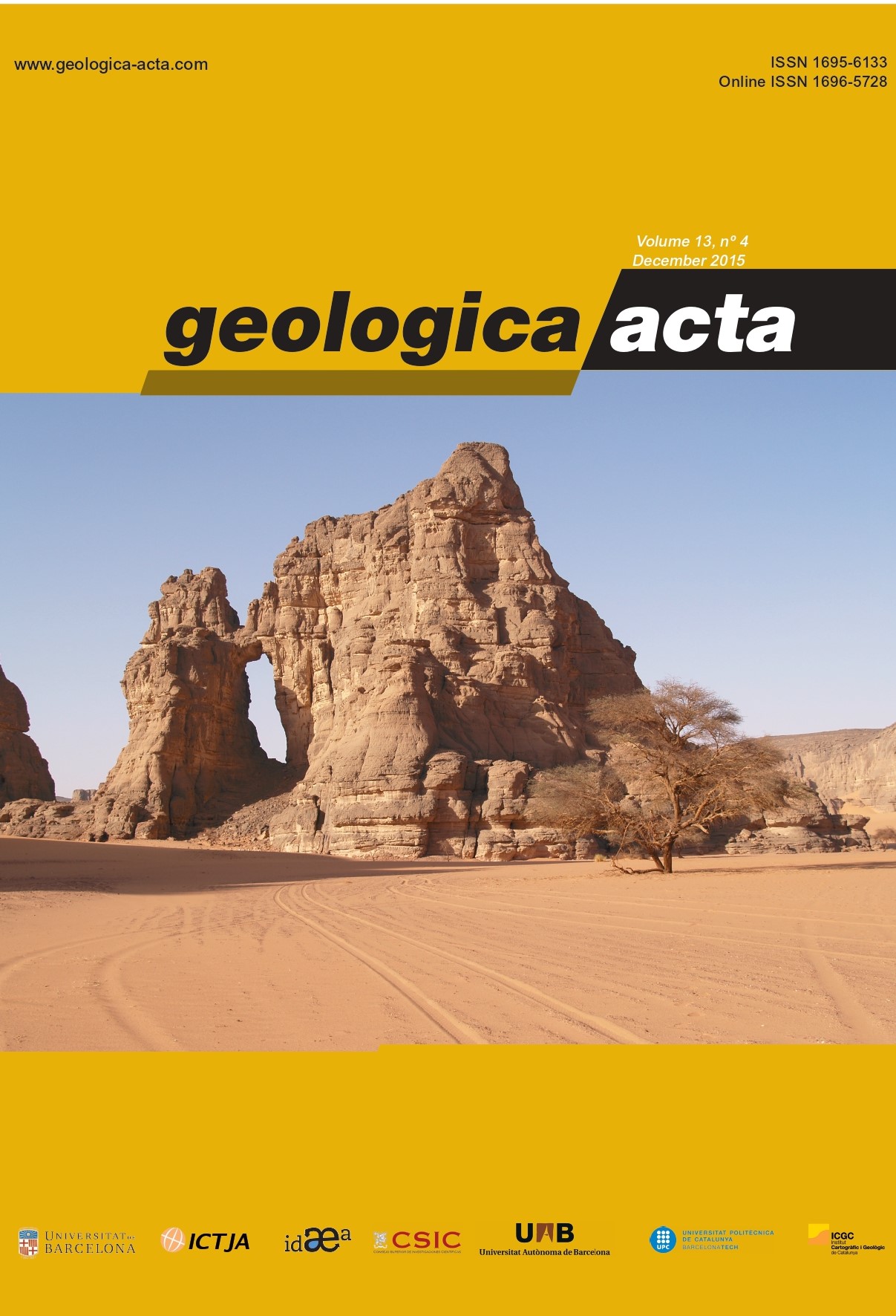Cretaceous mycelia preserving fungal polysaccharides: taphonomic and paleoecological potential of microorganisms preserved in fossil resins
DOI:
https://doi.org/10.1344/GeologicaActa2015.13.4.8Keywords:
Amber, Taphonomy, Paleoecology, Biomarkers, FungiAbstract
The cortices of pieces of Cretaceous amber around the world commonly are constituted by networks of filamentous structures. Based on their morphological characteristics, such structures have previously been classified in different microorganismal groups. Their correct interpretation, however, is of great importance to establish the conditions of the resin’s burial in the forest litter, and can provide important clues regarding the ecology and environmental conditions of Cretaceous resinous forests. Because these networks of filamentous structures present typical fungal morphological features we conducted a study in order to resolve their origin. The cortices of several pieces of Cretaceous amber from Spain were examined using light and scanning electron microscopy, energy dispersive X-ray spectroscopy and confocal laser scanning microscopy. This is the first time that Calcofluor white and Wheat germ agglutinin conjugated with fluorescein isothiocyanate have been employed as fungal markers in amber, and their use enabled us to detect preserved polysaccharides in the filamentous structures using confocal laser scanning microscopy. These results provide the first and oldest record of ß-1,3 and ß-1,4-linked polysaccharides, and specifically N-acetylglucosamine residues from chitin in a fossil fungus preserved in amber and to demonstrate that the networks of filamentous structures are mycelia composed of profuse hyphae of a resinicolous fungus. This type of mycelium constitutes one of the largest fungal fossil records known. Using taphonomic data it is demonstrated that the cortices originated during the Cretaceous due to fungal growth within non-solidified resin. The fossil diagenetic degradation sequence of the fungal hyphae and the surrounding amber is described. This degradation changed the microscopic appearance of the hyphae; thus, some of the previously indicated taxonomic features of this microorganism may actually be fossil diagenetic artifacts. The paleoecological implications with regard to fungal trophic requirements and forest environmental conditions are discussed.Downloads
Published
Issue
Section
License

This work is licensed under a Creative Commons Attribution-ShareAlike 4.0 International License.
Copyright
Geologica Acta is the property of the UB, GEO3BCN, IDAEA and UAB. Geologica Acta must be cited for any partial or full reproduction. Papers are distributed under the Attribution-Share Alike Creative Commons License. This license allows anyone to reproduce and disseminate the content of the journal and even make derivative works crediting authorship and provenance and distributing possible derivative works under the same or an equivalent license.
Author Rights
Authors retain the copyright on their papers and are authorized to post them on their own web pages or institutional repositories. The copyright was retained by the journal from the year 2003 until 2009. In all cases, the complete citation and a link to the Digital Object Identifier (DOI) of the article must be included.
The authors can use excerpts or reproduce illustrations of their papers in other works without prior permission from Geologica Acta provided the source of the paper including the complete citation is fully acknowledged.




